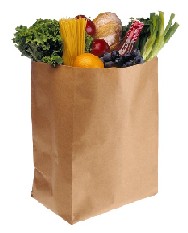
Korean cuisine relies on varied spices blending together to create a superb mix of aromas and flavors.
Spices are an essential part of Korean cuisine. It is believe that the quality and taste of a recipe totally relies on the spices used. One popular Korean side-dish is sticky rice, short-grain rice that sticks together when cooked. Rice and kimchi, fermented cabbage, are staples of any traditional Korean meal. There are very specific spices used in Korean cuisine. Some may seem familiar to you, but you’ll need to take a closer look if you’d like to master the art of Korean cooking.
Ginger:
Ginger is a famous Korean spice that is often used in Kimchi. It is also used in many dipping sauces to complement the flavor of dumplings and tempura. Ginger is a knobby root with white flesh and a brown skin. It includes a sweet yet spicy flavor to your food and is believed to have medicinal properties. Ginger is frequently used as a remedy for nausea and morning sickness.
Crushed Sesame Salt:
Crushed sesame salt is an ingredient in Bulgagi, a popular Korean dish that also includes beef, minced garlic, scallions and ground pepper. It can be made by toasting sesame seeds over a medium heat and crushing the cooled beans into a coarse powder. The powder can be refrigerated for up to one month, so you can keep on to using it in future Korean recipes. If you don't desire to make your own sesame salt, it can be found at your local grocer or Asian food store
Scallions:
A scallion is a type of green onion that is often used in many Korean recipes, such as scallion pancakes and Bulgogi. Many believe that the scallion has healing properties. It is often used to cure the common cold, increase perspiration and to treat bacterial infections. It is often used as a spice in Korean cooking; include flavor and aroma to many dishes.
Red Pepper:
Red pepper is usually used in Korean recipes to add a little heat to a dish. Since the 18th century, red pepper has been a main ingredient in the Korean staple-dish, Kimchi. Red pepper is among the most popular spices in the world with an estimated yield of 6 billion pounds worldwide, according to Al Goetze of McCormick.
Garlic:
Garlic is a general and common spice in Korean cuisine, adding to the flavor of dishes such as Manul Changachi (pickled garlic), Bulgogi and Kimchi. Garlic is a very pungent spice that comes in the form of a bulb and is used in the cuisine of many different regions.
